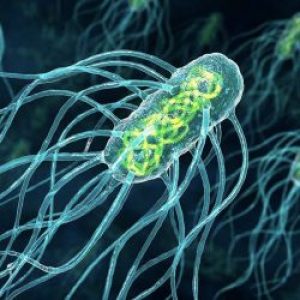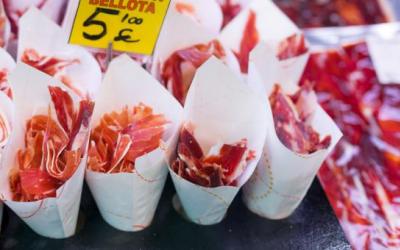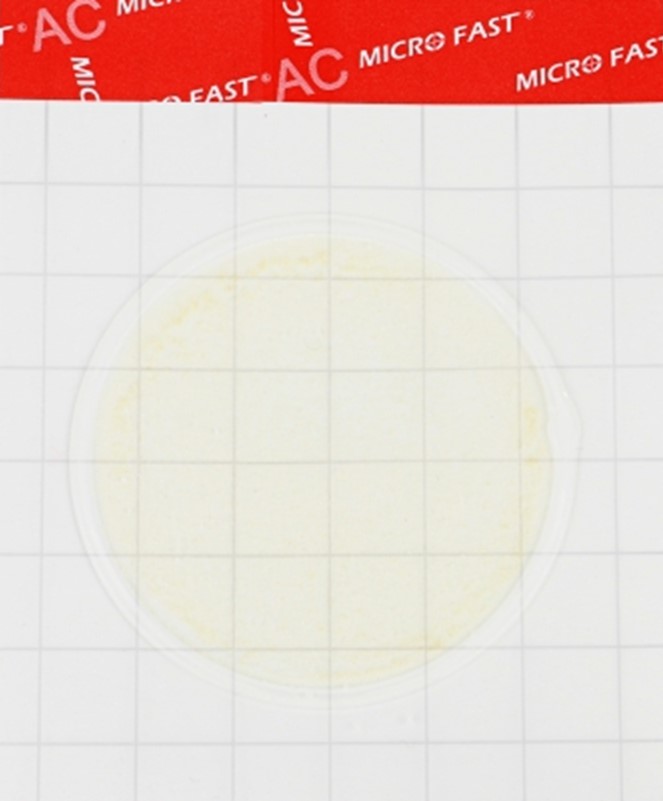Since the beginning of the year, the Primorsky Interregional Veterinary Laboratory has conducted more than 20 thousand studies of Russian and imported feed

The Primorsky Interregional Veterinary Laboratory conducted research on fodder MEAT and bone meal, mixed fodder for rabbits, birds and piglets, soybean meal, fodder soybeans, soybean cake and other types of fodder. In total, the Primorsky Interregional Veterinary Laboratory conducted 20,379 studies.
Laboratory specialists checked the compliance of the feed with the requirements of GOST and technical specifications for such indicators as E. coli bacteria, salmonella, anaerobes, the content of the mass fraction of heavy metals, metal-magnetic impurities and other indicators. Imported products were tested for GMO DNA content. As a result of the research, 17 positive results were obtained.
In particular, when conducting research on samples from a batch of fodder soybeans, specialists from the Primorsky Interregional Veterinary Laboratory revealed a discrepancy with the standards for the permissible level of urease activity.
Non-compliance with the standards of the permissible level of urease activity leads to a decrease in the quality of feed, resulting in a decrease in the absorption of protein and amino acids. This leads to a decrease in the growth and productivity of animals.
As a result of the study of the feed manufacturer from the Sakhalin region, three positive results were obtained in terms of indicators - general toxicity of the express method on protozoa, toxicity on warm-blooded and enteropathogenic types of Escherichia coli. The content of toxic substances in feed above the permissible level can cause disease or death of animals and birds.
Other positive results obtained in the study of feed and feed additives include violation of the standard for the content of fat mass fraction, anaerobes, grain impurities and GMOs.
Conclusions on the state of the products were sent to the customers of the research, and information about the detections was entered into the automated system (AS) in the field of veterinary medicine "Vesta". Further, the information was sent by urgent reports to the Central Office and territorial departments of the ROSSELKHOZNADZOR , the veterinary departments of the constituent entities of the Russian Federation and other departments.
Read together with it:
- Новые горизонты сотрудничества: Россия и Аргентина обсуждают совместный доступ на рынки продукции животного происхожденияОдной из ключевых тем конференции стал контроль за производством ветеринарных препаратов в Аргентине. Аргентинская сторона представила свою систему контроля, включающую Управление ветеринарных продуктов и Управление лабораторий животных. Эти организации обеспечивают высокие стандарты безопасности, так как каждая производственная единица подвергается проверкам каждые 3-5 лет и зарегистрирована в ин...
- Матричные РНК-вакцины от COVID продлили жизнь тяжелых раковых больныхМатричные РНК-вакцины против коронавируса продлили жизнь пациентам, больным раком в самой тяжелой, четвертой стадии, сообщает The Washington Post. К такому выводу пришли исследователи Онкологического центра имени М. Д. Андерсона Техасского университета и Университета Флориды. «Эти данные невероятно интересны, но они должны быть подтверждены в ходе третьего этапа клинических испытаний», — заявил од...
- The quarantine for farm animals due to leukemia has been lifted in the village of Gusevo.As of October 21, 2025, the restrictions were lifted due to an improvement in the clinical situation on farms. Specialists conducted the necessary laboratory tests and treatment procedures, confirming the absence of infected animals. As a result, livestock owners can now freely sell MILK and MEAT , as well as transport animals outside their communities.......
- China's beef market: shift to affordable cuts and growing Australian suppliesDiversification of Purchasing Murray Davis, Regional ManagerMEAT & Livestock Australia (MLA), covering Greater CHINA, noted that restaurants, particularly hotpot restaurants, are actively seeking alternative cuts such as oyster blade, neck, shank, and chuck. These cuts are becoming popular with consumers due to their affordability and variety of cooking methods. Amid economic uncertainty, restaura...
- "Ambitious plans." Brest Regional Executive Committee on the region's contribution to food security in the Union State.October 23, Brest. Brest Oblast is constantly expanding capacity to increase food production. This information was announced by Deputy Chairman of the Brest Oblast Executive Committee, Mikhail Batsenko, during a press tour dedicated to ensuring food security in the Union State, a BELTA correspondent reports. "Our level of self-sufficiency in basic agricultural products across all types exceeds 1.....
- A large batch of Astrakhan agricultural products has been exported to Iran.The entire shipment underwent mandatory inspection by ROSSELKHOZNADZOR , which conducted inspections and paperwork from October 10 to 16. All shipments were provided with laboratory test reports performed by the Astrakhan branch of the Federal State Budgetary Institution "TsOK AIC," which revealed no violations of veterinary legislation. The products received the appropriate veterinary certificate...
- Golden Autumn 2025: Volgograd Region Expands CooperationAt the 27th Russian Agro-Industrial Exhibition "Golden Autumn 2025," the Volgograd Region signed eight cooperation agreements. The Volgograd Region Committee on Agriculture and the Russian self-regulatory organization of audit unions of agricultural cooperatives, the Agrokontrol Union, signed a bilateral agreement. The parties will jointly address issues related to the development of the region's ...
- A Finnish court has given a suspended sentence to a Russian student for violating sanctions.Kainuu County COURT inFinland has sentenced a Russian student to one year and two months of suspended imprisonment for purchasing and shipping sanctioned goods to RUSSIA, Yle reports. During the court hearing, the student admitted to purchasing and shipping laptops, processors, game consoles, smartphones, laser rangefinders, drones, action cameras, car polishing devices, and clothing to Russia. Hi...
- Exports of domestic meat and livestock products increased by 14% in 2025The main supply destinations are CHINA and Saudi Arabia , where purchases have increased. A significant increase in pork exports was also noted, exceeding 205,000 tons, a 35.6% increase compared to last year. Dairy products also made significant contributions, reaching 142,500 tons, with the largest volumes shipped to Kazakhstan and Uzbekistan . These figures confirm the successful development of ...





























































